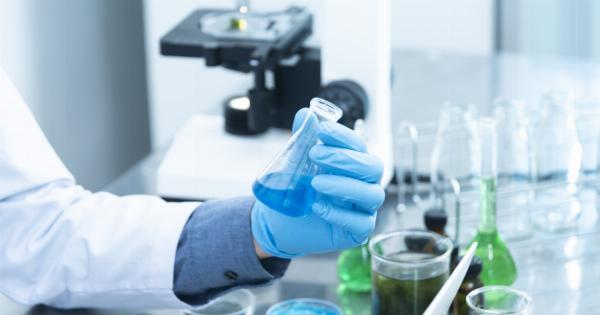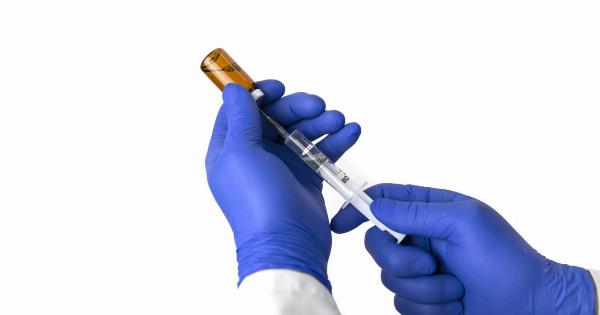Attraction is a complex and multifaceted phenomenon that has puzzled scientists and researchers for centuries. While there are various factors at play when it comes to attraction, one hormone stands out as a key player – oxytocin.
Often referred to as the “love hormone,” oxytocin has been found to have a significant impact on human bonding, social behavior, and ultimately, attraction.
What is oxytocin?
Oxytocin is a neuropeptide hormone produced in the hypothalamus and released by the pituitary gland. It plays a crucial role in various physiological and psychological processes, including childbirth, breastfeeding, and social bonding.
Oxytocin is released during moments of intimacy and connection, such as hugging, cuddling, and sexual activity.
The effects of oxytocin on attraction
Research has demonstrated that oxytocin influences attraction in several ways. Firstly, it enhances feelings of trust and empathy between individuals.
Oxytocin promotes bonding and cooperation, making people feel more connected and attracted to each other. Studies have shown that administering oxytocin through nasal sprays increases trust and generosity in social interactions.
Furthermore, oxytocin plays a role in fostering attachment. When released during intimate moments, oxytocin facilitates the formation of emotional bonds between partners.
It creates a sense of closeness and intimacy, which strengthens the attraction between individuals. Oxytocin has been shown to contribute to the formation and maintenance of long-term relationships.
Oxytocin and sexual attraction
Oxytocin also influences sexual attraction and behavior. In men, higher levels of oxytocin have been linked to increased sexual desire and enhanced libido.
Studies have found that men with higher baseline levels of oxytocin experience more sexual satisfaction and report stronger emotional connections with their partners.
Similarly, in women, oxytocin plays a role in sexual arousal and responsiveness. It has been shown to enhance the sensitivity of erogenous zones and increase the intensity of orgasms.
Oxytocin is released during sexual activity, amplifying the pleasure and the emotional connection experienced during intimate moments.
The role of oxytocin in mate selection
Oxytocin also influences the process of mate selection. Research indicates that individuals with higher levels of oxytocin exhibit a preference for partners with similar characteristics and values.
This phenomenon, known as assortative mating, suggests that oxytocin may play a role in establishing long-term compatibility and ensuring the success of relationships.
Moreover, oxytocin has been found to impact the perception of facial attractiveness. Studies have shown that individuals who received a dose of oxytocin rated faces as more attractive compared to those who received a placebo.
This suggests that oxytocin may play a role in the initial evaluation of potential partners and contribute to the formation of initial attraction.
Factors influencing oxytocin release
Various factors influence the release of oxytocin in the body. Physical touch, such as hugging, kissing, or massage, has been shown to stimulate oxytocin release.
Positive social interactions, such as engaging in shared activities or having conversations with loved ones, also promote oxytocin release. Furthermore, sexual activity and orgasm trigger a significant release of oxytocin.
On the other hand, stress and negative emotions can inhibit the release of oxytocin. High levels of stress hormones, such as cortisol, can interfere with oxytocin production and release.
This can have a detrimental effect on social bonding and attraction, as stress impairs the ability to form trusting and intimate connections with others.
Oxytocin and its potential applications
The role of oxytocin in attraction and bonding has led to a growing interest in its potential applications. Researchers are exploring the use of oxytocin in therapeutic contexts, such as couples therapy and the treatment of social disorders.
Oxytocin has shown promise in improving relationship satisfaction, reducing conflict, and enhancing empathy and communication between partners.
However, it’s important to note that oxytocin is not a “magic love potion.” Its effects on attraction are complex and influenced by various factors, including individual differences and the nature of relationships.
Additionally, the use of exogenous oxytocin raises ethical considerations and requires further research to fully understand its long-term effects and potential risks.
Conclusion
Oxytocin is a powerful hormone that influences attraction in profound ways. It enhances trust, empathy, and bonding between individuals, promoting feelings of intimacy and connection.
Oxytocin also plays a role in sexual attraction and behavior, as well as mate selection. Understanding the effects of oxytocin on attraction can provide valuable insights into human relationships and potentially contribute to the development of therapeutic interventions in the future.






























